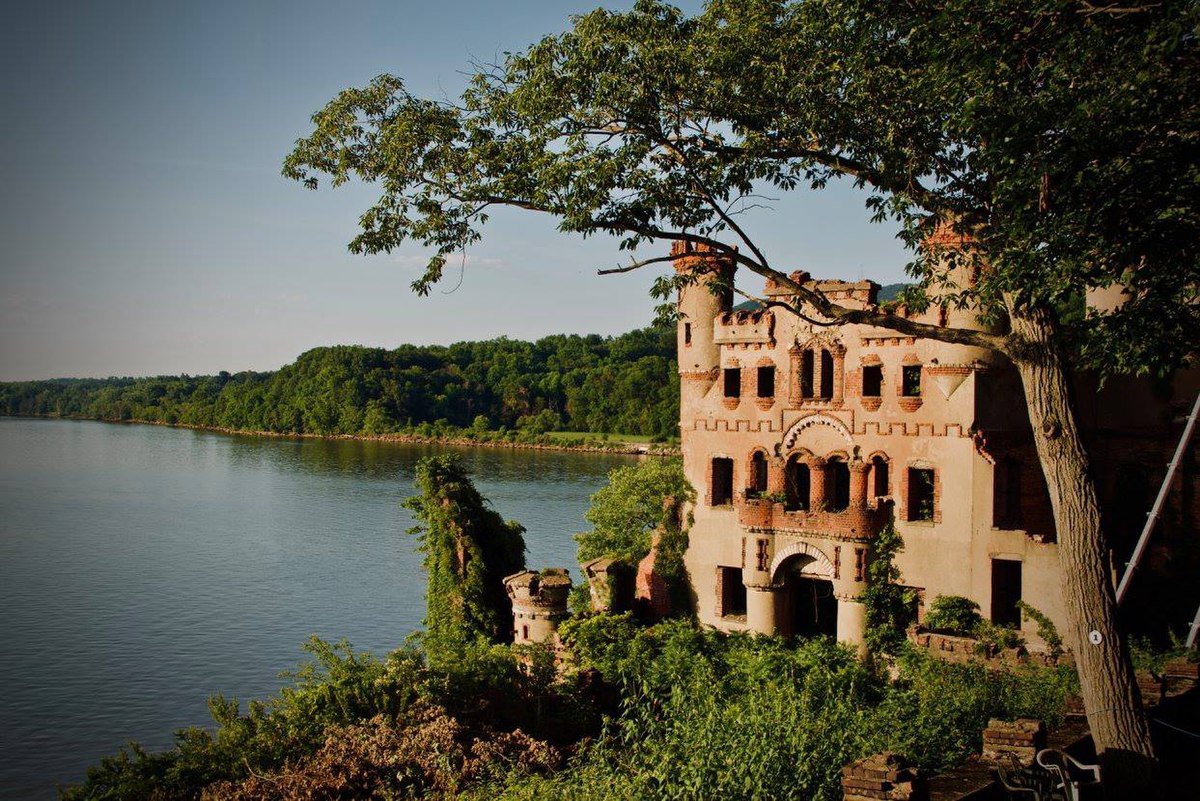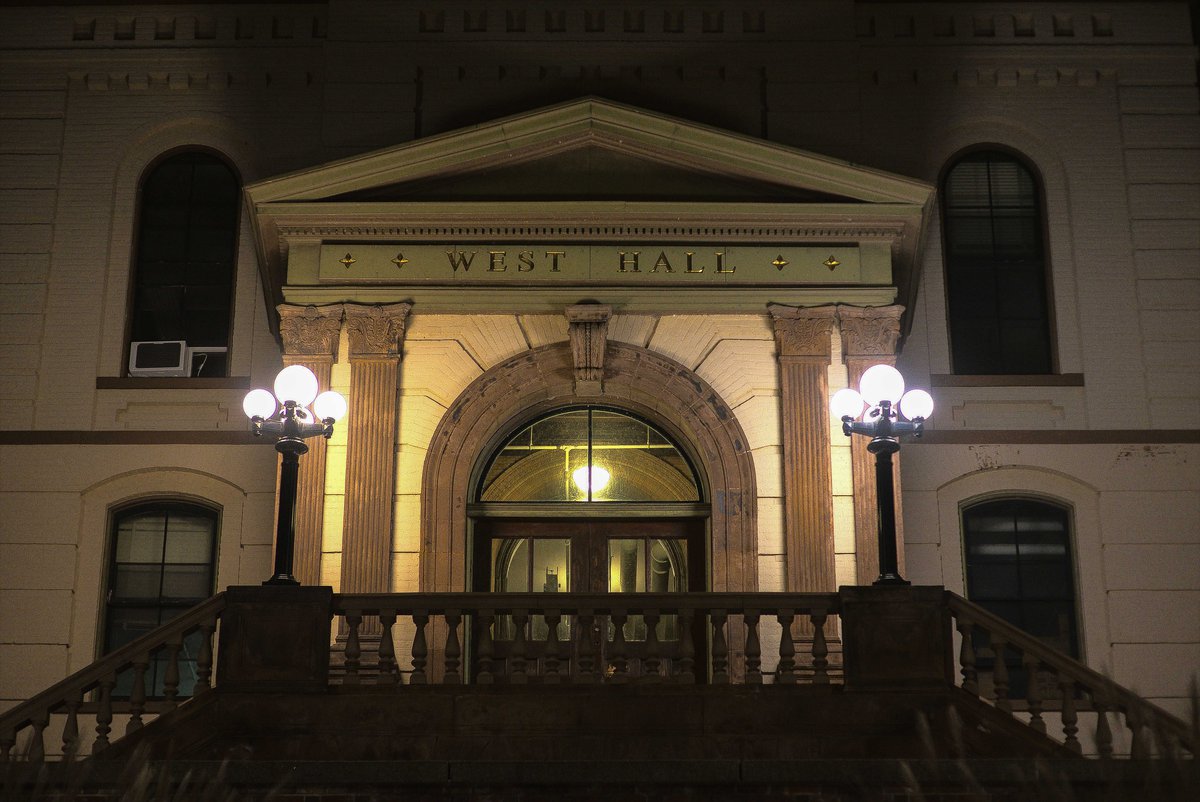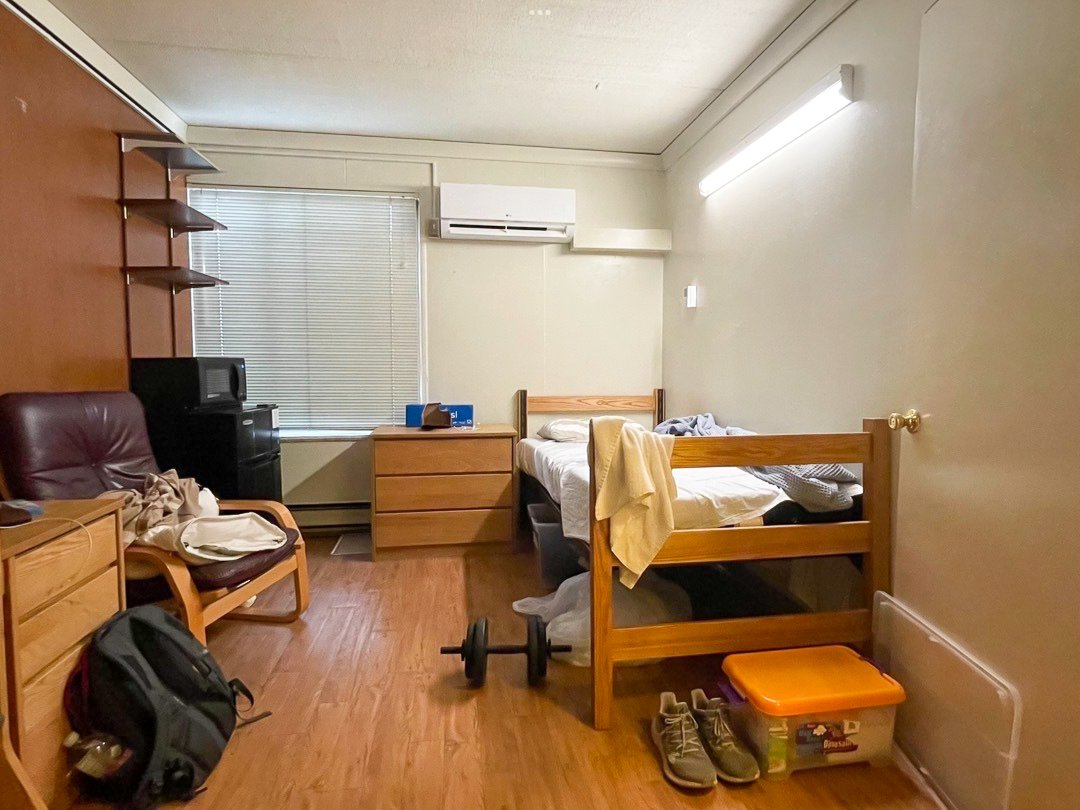Bannerman’s Armory and the Scottish castle on the Hudson

My train ride from NYC to Albany after Spring Break was not particularly exciting. I spent most of it speaking with the guy sitting next to me, studying for my next physics exam, and listening to some music from a game called Elden Ring. It had been snowing hard during my trip back. So hard that, when looking outside the window, it was as though a foggy white veil fell upon anything a good hundred or so feet in front of me.
We had been traveling at the side of the Hudson River for a short while when I noticed the black silhouette of a structure jutting out from the fog. It was a ruined castle with the tower and bits of the wall and towers seemingly torn off the side. The building looked like it had been laid to siege and that those who inhabited it had been so utterly defeated that the fortress was never rebuilt. Suddenly, my choice in music felt strangely prescient.
I turned to the guy sitting next to me and said something to the effect of: “I wonder why someone would build a European style castle in the middle of the Hudson River.”
As far as I knew, the Hudson had never been much of a contested area, so there’s no reason to spend a ton of money on building a structure which would most likely be useless. The man sitting next to me looked it up and told me that the edifice was a military warehouse built in 1901. I considered leaving it at that, but I was still so intrigued by the premise of someone selling the US government on creating a castle to store surplus weaponry in 1901. Turns out, this wasn’t really the case. There was more to the story.
Francis Bannerman was the world’s largest buyer of surplus military ordinance. His career began at the end of the Civil War when the Federal government began auctioning off military goods to be sold as scrap. However, Bannerman quickly realized that the price of the military ordinance was often much more than the sum of its parts. Rather than breaking everything down into scrap, Bannerman elected to simply keep the ordinance as it was and stockpile them in his storage room in Brooklyn. Business was good. So good that Bannerman was able to supply the Japanese army during the Russo-Japanese war. They submitted samples to the Japanese war department for “10,000 army saddles, 100,000 knapsacks, 150,000 gun slings, 100,000 khaki uniforms, 150,000 white summer uniforms, and 20 million cartridges.”
After the Spanish-American war, Bannerman needed to expand his venture as he had agreed to a deal. He purchased 90 percent of the military equipment from that war. He also decided to purchase a small sliver of land called Pollepel Island in the center of the Hudson 50 miles north of New York City. Without consulting the expertise of any architects or engineers, Bannerman went to work on the construction of a Scottish castle to sit upon that island. He didn’t just want it to be a castle, he wanted this to be a museum.
Frank Bannerman built a castle and filled it with all of the coolest things he could get his hands on: a chain purportedly placed across the river at West Point during the Revolution, a table owned by general George Washington, and equipment Admiral Perry used in his voyage to the North Pole. Bannerman’s collection of weapons and ammunition was unparalleled and collectors lauded his book The Bannerman Catalog as the best book ever written on weapons of war.
At the age of 68, only eight years after purchasing the island, Frank Bannerman would die of overwork. His sons Francis (Frank) VII and David Bannerman would continue operating the family business after their father’s death. During their tenure they focused much more on working out of New York City and often forgot about their father’s venture on Pollepel Island entirely. The state of neglect eventually led to the building's explosion in 1920. Windows shattered at each side of the Hudson as 200 pounds of gunpowder and other explosive ordinance was ignited by the summer heat. Large chunks of the wall were sent flying across the river onto train tracks and scattered all throughout the Hudson River. You can still see part of the ruined structure to this day in the form of a green algae-wracked overpass sitting upon eroded walls of stone a good couple hundred feet from where the castle stands.
With the deaths of the Bannerman brothers in 1945 and 1957, interest in the castle seemed to evaporate entirely. Frank Bannerman's grandson Charles sold the island to New York’s Taconic State Park Commission and disposed of all remaining arms and munitions (with some later being sent to the Smithsonian). Later in 1967, vandals would arrive at the island and set fire to what was left of it; anything of value left within the castle was subsequently destroyed. New York State officially designates Bannerman Castle as being unsafe to visit and bans anyone from traversing it.
However, this isn’t the end of the story of Bannerman Castle. In 1994, The Bannerman Castle trust was created by a man named Neil Caplan in order to preserve the landmark. Caplan started giving boat tours around the island twice a month in order to keep interest alive in the historical site. Eventually, the state of New York allowed Caplan to conduct “Hard Hat tours” of Bannerman island. As time went on, Caplan was able to gather one million dollars in service of preserving the structure. Now the island is only truly abandoned in the wintertime, and from May to June. When it’s not the off-season, an adult can purchase a ticket for a hard hat tour across the island for forty dollars.
If it weren’t for the work of people like Neil Caplan, we may never have known this story. The beautiful culmination of a man’s life’s work and identity may have been lost forever. In order for that story to be told, there must be people willing to record and preserve it. Bannerman castle is made from solid stone, it survived two explosions, a fire, and years of neglect yet still remained standing. Not every historical site is so lucky. Even in this case, Bannerman’s arsenal still did not come out unscathed. At one time, Bannerman Castle held 90 percent of weapons captured during the Spanish-American War. Because it was left uncared for, many of those relics were destroyed. If more places had a Neil Caplan to watch over them, stories like this one would never need to fear going up in flames.

 RPI HISTORY
RPI HISTORY
 Club Spotlight
Club Spotlight
 COVID-19
COVID-19
 Album Review
Album Review